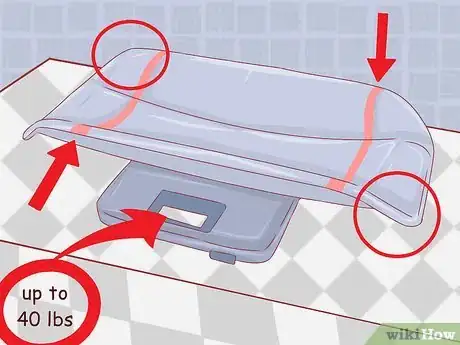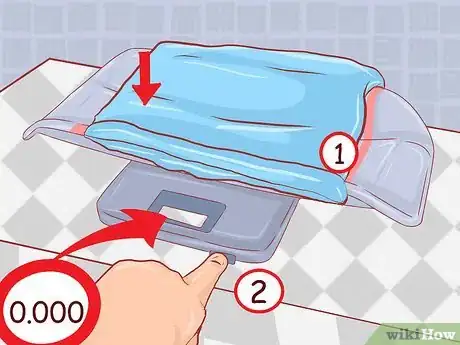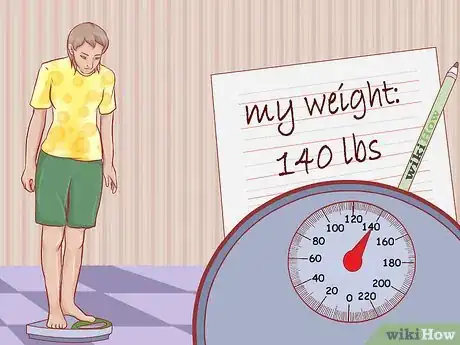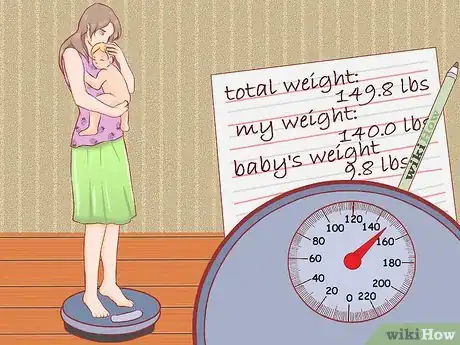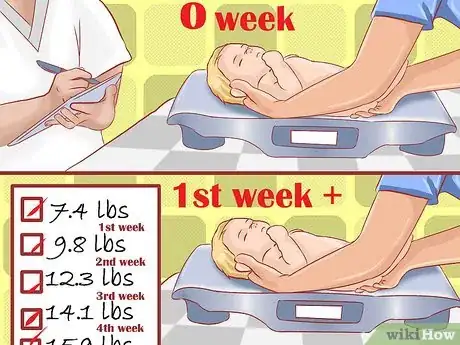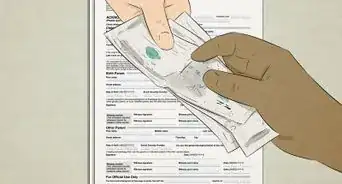This article was co-authored by Laura Marusinec, MD. Dr. Marusinec is a board certified Pediatrician at the Children's Hospital of Wisconsin, where she is on the Clinical Practice Council. She received her M.D. from the Medical College of Wisconsin School of Medicine in 1995 and completed her residency at the Medical College of Wisconsin in Pediatrics in 1998. She is a member of the American Medical Writers Association and the Society for Pediatric Urgent Care.
This article has been viewed 117,012 times.
If you have a newborn baby, you likely know the importance of proper infant weight gain. Although many babies lose weight within a few days of their births, they soon begin to put on the ounces. For the first six months of their lives, babies tend to gain 5 to 7 oz. per week. Your baby should weigh three times her birth weight by the time she reaches her first birthday.[1] To keep track of infant weight gain, you can weigh your baby at home or at the doctor’s office.
Steps
Using a Baby Scale at Home
-
1Acquire a baby scale. Look for a scale that is sturdy and accurate. There should be a tray or indentation in which your baby can lay safely. Additionally, there should be no sharp or rough parts that could hurt your baby. Look for a scale that can hold up to 40 lbs (approximately 18 kg).[2]
- Make sure the scale can read differences of as little as 10 grams.
- Scales are available for purchase online for around $50.
- Baby scales can be digital, colorful, utilitarian, and can include accessories like a length measuring arm.
- In some regions, you can rent a baby scale. This is a practical option for people with budget or space limitations.
-
2Make sure the scale is set to 0. Whether a digital or analog scale, be sure the reading is 0 when there is nothing on it. If you plan to put the baby on top of a blanket, you can null this weight on a digital scale. To do so, first place the blanket on the scale. Once its weight registers, press the tare key. This will void that weight.
-
3Weigh the baby. Set the baby on the scale, preferably naked. Keep one hand hovering over, but not on, the baby’s chest. You want to be able to catch the baby if he slips. Read his weight. Record the baby’s weight in a notebook. Keep track of weight gain or loss. As weight fluctuation happens often, it is best to weigh your baby every two weeks to measure longer term gains or losses.[3]
- Don't worry too much about short-term weight gains or losses, unless your child seems ill or is having feeding problems. In that case, check with your doctor.
- If the weather is too cold, weigh your child’s clothes separately and then dress your child for the weigh-in. Subtract the weight of the clothes from the weight shown on the scale.
- Set the scale on a sturdy, flat surface. Your dining room table would work as would a wood or linoleum floor.
Weighing Your Baby With You
-
1Weigh yourself. Stand on the scale. Register your weight. Write it down. Ideally, use a scale that can measure in tenths of a pound. This method is less precise than a baby scale but is cost effective.
- 1/10 of a pound is 45.36 grams or 1.6 oz
-
2Pick up your child. Preferably hold your child while she is naked. This will ensure a more accurate reading. If you prefer, you can hold your child’s clothes while you weigh yourself so that only the child’s body weight is added when you weigh yourself with a dressed child.
-
3Weigh yourself and your baby. Register the weight. Write it down. Subtract your single weight from your combined weight. The result is your baby’s weight.
- For example: if you alone weigh 140 lbs. and you and the baby weight 149.8 lbs., then your baby weighs 9.8 lbs. on his own.
Weighing Your Child at the Doctor’s Office
-
1Schedule a visit. Call your doctor. Ask whether you can drop in to use her scale. Some offices allow this. Others require you to have an appointment.
-
2Have the medical professional weigh your baby. Your doctor or a nurse will weigh your child on a medical baby scale. She will note the baby’s weight in his chart. All babies are weighed at birth. Medical professionals also will weigh your baby again during his first week. At period check-ups throughout your baby’s early years, your child will be weighed again.[4]
- Medical baby scales are often extremely accurate and more expensive than home scales. Their designs can be similar to home scales with contoured dips. Some doctor’s offices might have car seat-like baby scales as well.
-
3Keep attending check-ups. As your child ages, it is important that in addition to home weigh-ins, that you bring her to the doctor. The doctor will have advice and feedback on your child’s weight gain or loss.
- The doctor might suggest dietary changes, such as feeding more or less or feeding different foods or liquids.
References
- ↑ http://www.mayoclinic.org/healthy-lifestyle/infant-and-toddler-health/expert-answers/infant-growth/faq-20058037
- ↑ http://depts.washington.edu/growth/module4/text/page2a.htm
- ↑ http://www.nhs.uk/conditions/pregnancy-and-baby/pages/baby-reviews.aspx
- ↑ http://www.nhs.uk/conditions/pregnancy-and-baby/pages/baby-reviews.aspx
